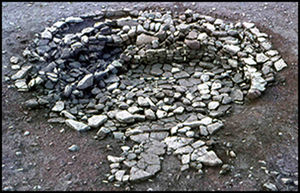Article contents
‘Problematic stuff’: death, memory and the interpretation of cached objects
Published online by Cambridge University Press: 22 June 2021
Abstract

Deliberately deposited (or cached) objects are ubiquitous in the archaeological record, yet they are often classified under different categories, such as hoards, structured deposits, grave goods and cenotaph burials, and interpreted according to different criteria. Drawing on contemporary attitudes to death, dying and bereavement, and using later prehistoric Britain as a case study, this article brings the analysis of these objects together within a single interpretive framework, which asserts that much of this material represents the ‘problematic stuff’ left behind by the dead. This approach forces us to reconsider the traditional boundaries drawn between different aspects of the archaeological record and demonstrates the value that emotion has in our interpretations of past societies.
- Type
- Research Article
- Information
- Copyright
- Copyright © The Author(s), 2021. Published by Cambridge University Press on behalf of Antiquity Publications Ltd.
References
- 8
- Cited by


